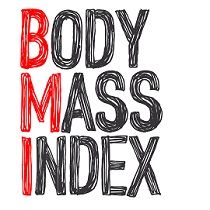Article
Women's Risk of Stroke, and Type of Stroke, Influenced by BMI
Author(s):
“We found that the risk of ischemic stroke...the most common stroke subtype, is increased in overweight and obese women,†study author Gillian Reeves, explained. “By contrast, the risk of hemorrhagic stroke...is decreased in overweight and obese women.

A woman’s body mass index (BMI) can influence her risk for stroke, according to findings published in the journal Neurology.
Researchers from the University of Oxford observed 1.3 million women between 1996 and 2001 in order to compare associations between body mass index with ischemic stroke (the most common type of stroke) and hemorrhage stroke (often a more deadly stroke) risk. The women, whose average age was 57 years, had never had a stroke prior to recruitment, and the investigators followed their records to observe hospital admissions and deaths for an average of 11.7 years.
Throughout this period, the researchers observed 20,549 first strokes, of which 9,993 were categorized as ischemic and 5,852 were classified as hemorrhagic.
An increased body mass index was linked to an increased risk of ischemic stroke, but a decreased risk for hemorrhagic stroke, the investigators determined. While the BMI-related risks for ischemic and hemorrhagic strokes were significantly different, the study authors found that the body mass index risks were not significantly different for intracerebral hemorrhage and subarachnoid hemorrhage. The researchers also underlined that published data from previous studies indicated a consistently greater body mass index associated relative risk for ischemic than hemorrhagic stroke; however, they said most of the evidence, coming before their UK based assessment, came from Asian populations.
“We found that the risk of ischemic stroke, which is associated with a blockage of blood flow to the brain and is the most common stroke subtype, is increased in overweight and obese women,” study author Gillian Reeves, PhD, explained in a press release. “By contrast, the risk of hemorrhagic stroke, which is associated with bleeding into the brain, is decreased in overweight and obese women. Our findings add to the growing body of evidence that different types of stroke have different risk profiles.”
In an accompanying editorial, Kathryn Rexrode, MD, MPH, of the Brigham and Women’s Hospital in Boston was quick to point out that obesity is a substantial stroke risk factor for all ages, and an especially alarming risk factor for young adults.
“Higher body mass index, or BMI, was associated with increased risk of total stroke in every category and the number of ischemic strokes was higher than the number of hemorrhagic stroke in every category. So higher BMI was not associated with protection or reduced risk of total stroke,” Rexrode said.
Related Coverage:
Blood Pressure Control Outweighs Hypertension History in Stroke Prevention
Younger Women Have a Higher Risk of Pregnancy-Associated Stroke


